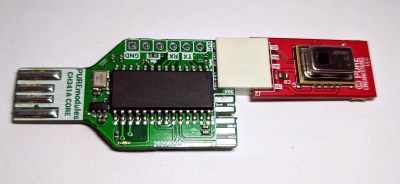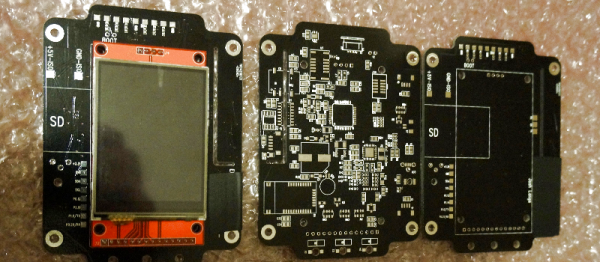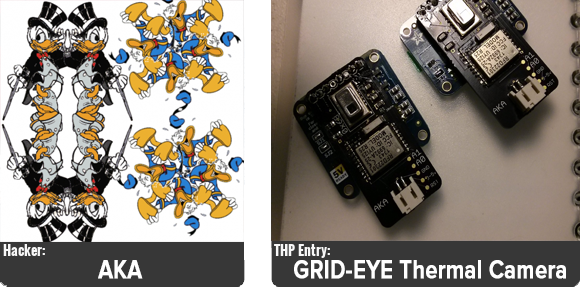Panasonic’s Grid-EYE sensor is essentially a low-cost 8×8 thermal imager with a 60 degree field of view, and a nice breakout board makes it much easier to integrate into projects. [Pure Engineering] has created an updated version of their handy breakout board for the Grid-EYE and are currently accepting orders. The new breakout board is well under an inch square and called the GridEye2 (not to be confused with the name of the main component, the AMG8833 Grid-EYE by Panasonic.)

A common way to interface with the Grid-EYE is over I2C, but to make connecting and developing on a PC more straightforward, [Pure Engineering] has made sure the new unit can plug right into their (optional) CH341A development board to provide a USB interface. Getting up and running on a Linux box is then as simple as installing the Linux drivers for the CH341A, and using sample C code to start reading thermal data from an attached GridEye2 board.
The Grid-EYE is a low-cost and capable little device that mates well with an LED matrix display, and on the more advanced side, a simple Gaussian interpolation can have a striking effect when applied to low-resolution sensors, making them appear higher resolution than they actually are.



















